Input interpretation

L-serine
Chemical names and formulas
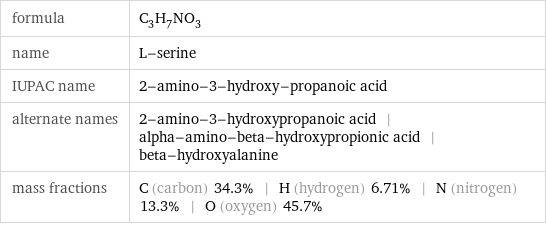
formula | C_3H_7NO_3 name | L-serine IUPAC name | 2-amino-3-hydroxy-propanoic acid alternate names | 2-amino-3-hydroxypropanoic acid | alpha-amino-beta-hydroxypropionic acid | beta-hydroxyalanine mass fractions | C (carbon) 34.3% | H (hydrogen) 6.71% | N (nitrogen) 13.3% | O (oxygen) 45.7%
Lewis structure
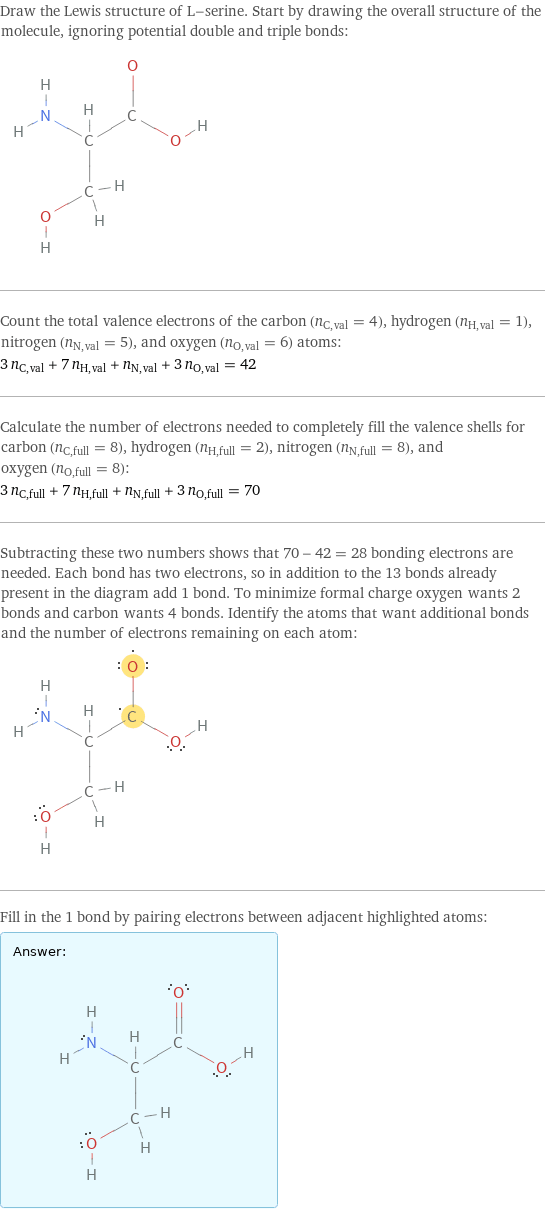
Draw the Lewis structure of L-serine. Start by drawing the overall structure of the molecule, ignoring potential double and triple bonds: Count the total valence electrons of the carbon (n_C, val = 4), hydrogen (n_H, val = 1), nitrogen (n_N, val = 5), and oxygen (n_O, val = 6) atoms: 3 n_C, val + 7 n_H, val + n_N, val + 3 n_O, val = 42 Calculate the number of electrons needed to completely fill the valence shells for carbon (n_C, full = 8), hydrogen (n_H, full = 2), nitrogen (n_N, full = 8), and oxygen (n_O, full = 8): 3 n_C, full + 7 n_H, full + n_N, full + 3 n_O, full = 70 Subtracting these two numbers shows that 70 - 42 = 28 bonding electrons are needed. Each bond has two electrons, so in addition to the 13 bonds already present in the diagram add 1 bond. To minimize formal charge oxygen wants 2 bonds and carbon wants 4 bonds. Identify the atoms that want additional bonds and the number of electrons remaining on each atom: Fill in the 1 bond by pairing electrons between adjacent highlighted atoms: Answer: | |
3D structure
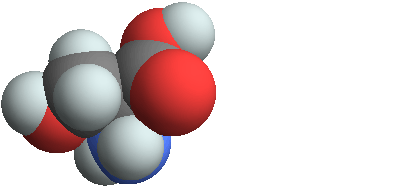
3D structure
Basic properties

molar mass | 105.09 g/mol phase | solid (at STP) melting point | 140 °C boiling point | 259 °C density | 1.6 g/cm^3
Units

Hydrophobicity and permeability properties

experimental LogP hydrophobicity | -4 predicted LogP hydrophobicity | -3.41 predicted LogS | 0.66
Basic drug properties

approval status | approved | nutraceutical | small molecule drug categories | dietary supplement | micronutrient | non-essential amino acid
Amino acid properties
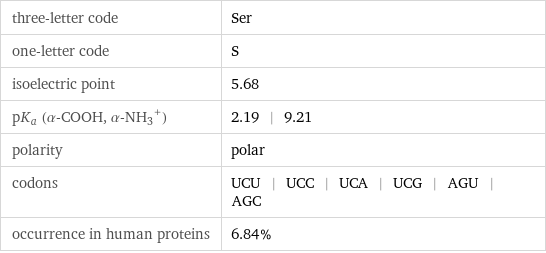
three-letter code | Ser one-letter code | S isoelectric point | 5.68 pK_a (α-COOH, (α-NH_3)^+) | 2.19 | 9.21 polarity | polar codons | UCU | UCC | UCA | UCG | AGU | AGC occurrence in human proteins | 6.84%
Solid properties (at STP)

density | 1.6 g/cm^3
Units

Thermodynamic properties

critical temperature | 715 K critical pressure | 6.3 MPa (at STP)
Chemical identifiers
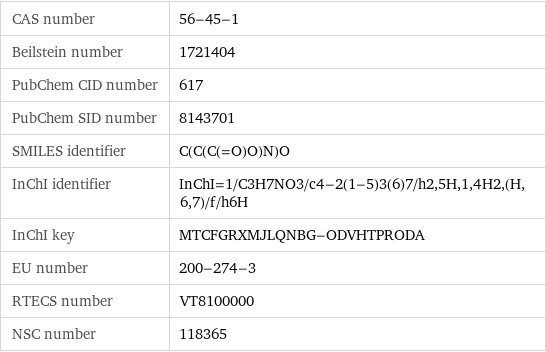
CAS number | 56-45-1 Beilstein number | 1721404 PubChem CID number | 617 PubChem SID number | 8143701 SMILES identifier | C(C(C(=O)O)N)O InChI identifier | InChI=1/C3H7NO3/c4-2(1-5)3(6)7/h2, 5H, 1, 4H2, (H, 6, 7)/f/h6H InChI key | MTCFGRXMJLQNBG-ODVHTPRODA EU number | 200-274-3 RTECS number | VT8100000 NSC number | 118365
Toxicity properties

RTECS classes | mutagen